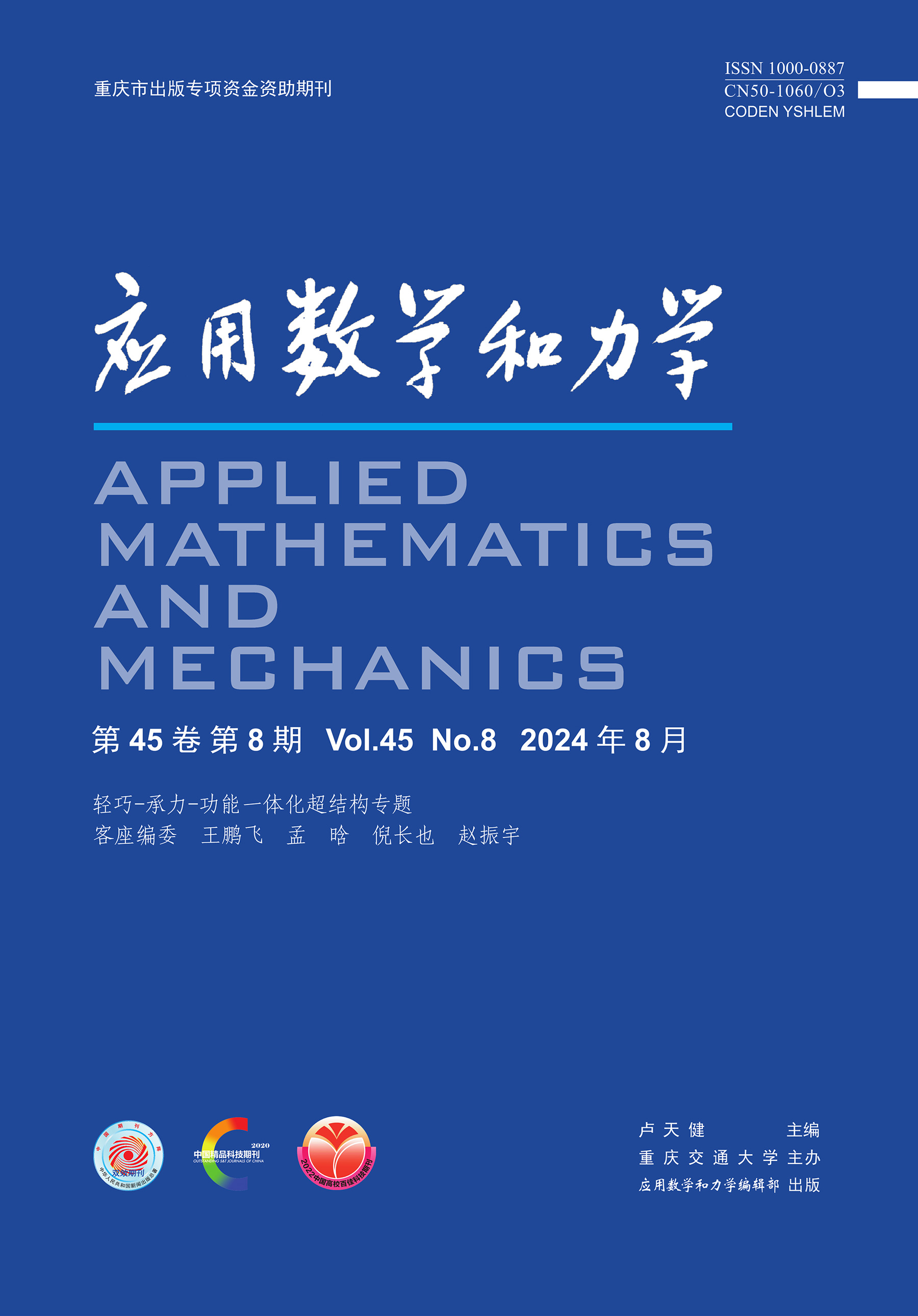Breakup and Atomization Characteristics of Liquid Jets in Strong Swirling Crossflow Based on the VOF-LPT Method
Q4 Mathematics
引用次数: 0
Abstract
The liquid jet breakup and atomization interacting with a strong swirling crossflow is of significance in designing advanced aeroengines. The Eulerian-Lagrangian method was utilized to simulate the jet breakup and atomization processes. The volume of fluid (VOF) method was employed to track the gas-liquid interface topology evolution during the jet breakup, while the Lagrangian particle tracing (LPT) method was used to track the discrete droplets and obtain the information on far-field liquid dispersion. The crossflow was designed with different swirl numbers, ranging from 0 to 2.5. Momentum ratio q between the liquid jet and the air flow was set to 10, and the gas Weber number was 39. Under these conditions, both the column and shear breakups were observed. The results indicate that, the development of axial waves induced by the Kevin-Helmholtz (KH) instability was the main cause for column breakup. During the surface breakup, ligaments and small liquid jet branches were stripped from the liquid jet surface, primarily driven by azimuthal shear waves. The strong swirling airflow enhances the jet column breakup process, leading to a lower radial height for the breakup location and a shorter breakup time. However, as the swirl number increases, the radial height of the onset of breakup would increase, which suggests the swirl flow would delay the surface breakup of liquid jets. With the increase of the swirl number, the velocity component in the flow direction decreases, and the jet trajectory in the radial direction increases significantly. The deflection angle of the jet shows a linear relationship with the position of the flow direction, with larger air swirl numbers resulting in a steeper slope. Furthermore, as the swirl number increases, the Sauter mean diameter (SMD) of the entire spray field would decrease, and the liquid dispersion would increase.基于VOF-LPT方法的强旋流中液体射流破碎与雾化特性研究
射流破碎雾化与强旋流的相互作用在先进航空发动机设计中具有重要意义。采用欧拉-拉格朗日方法模拟了射流破碎和雾化过程。采用流体体积法(VOF)跟踪射流破碎过程中气液界面拓扑演化,采用拉格朗日粒子示踪法(LPT)跟踪离散液滴,获取远场液体弥散信息。横流设计了不同的旋流数,范围为0 ~ 2.5。液体射流与气流的动量比q设为10,气体韦伯数为39。在此条件下,观察到柱破坏和剪切破坏。结果表明,凯文-亥姆霍兹(Kevin-Helmholtz, KH)失稳引起的轴向波的发展是导致柱破碎的主要原因。在破裂过程中,主要由方位角剪切波驱动,液体射流表面的韧带和小的液体射流分支被剥离。强旋流增强了射流柱的破碎过程,使破碎位置径向高度降低,破碎时间缩短。然而,随着旋流数的增加,破裂起始的径向高度会增加,这说明旋流会延迟液体射流的表面破裂。随着旋流数的增加,流动方向上的速度分量减小,径向上的射流轨迹明显增大。射流的偏转角与气流方向的位置呈线性关系,气流旋流数越大,斜率越大。此外,随着旋流数的增加,整个喷雾场的Sauter平均直径(SMD)减小,液体分散增大。
本文章由计算机程序翻译,如有差异,请以英文原文为准。
求助全文
约1分钟内获得全文
求助全文
来源期刊

应用数学和力学
Mathematics-Applied Mathematics
CiteScore
1.20
自引率
0.00%
发文量
6042
期刊介绍:
Applied Mathematics and Mechanics was founded in 1980 by CHIEN Wei-zang, a celebrated Chinese scientist in mechanics and mathematics. The current editor in chief is Professor LU Tianjian from Nanjing University of Aeronautics and Astronautics. The Journal was a quarterly in the beginning, a bimonthly the next year, and then a monthly ever since 1985. It carries original research papers on mechanics, mathematical methods in mechanics and interdisciplinary mechanics based on artificial intelligence mathematics. It also strengthens attention to mechanical issues in interdisciplinary fields such as mechanics and information networks, system control, life sciences, ecological sciences, new energy, and new materials, making due contributions to promoting the development of new productive forces.
 求助内容:
求助内容: 应助结果提醒方式:
应助结果提醒方式:


